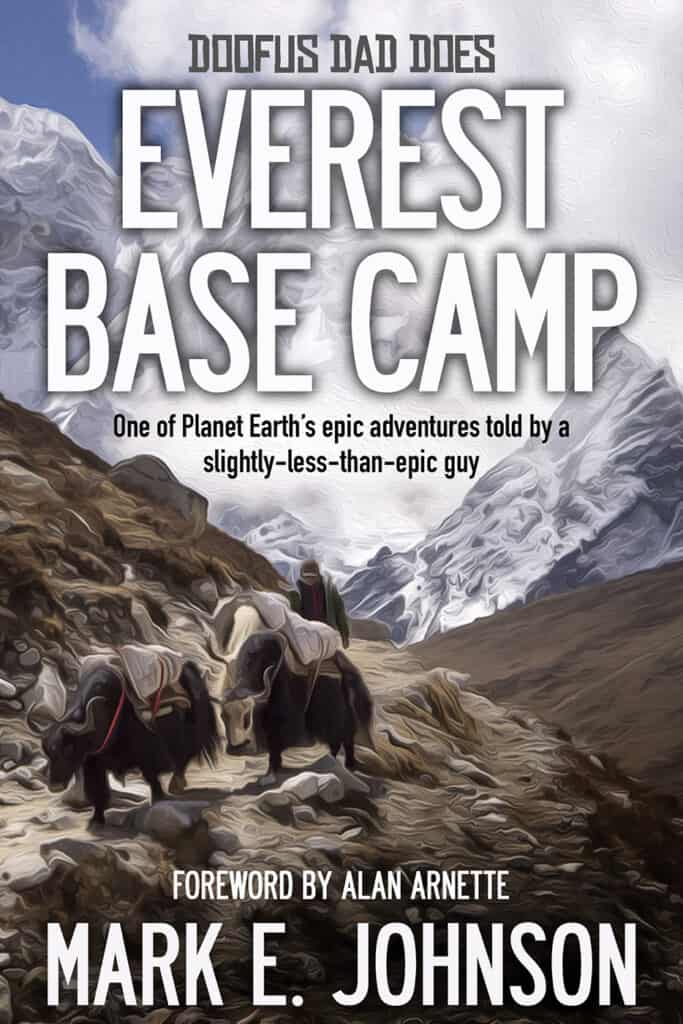When planning a high-altitude trek with Hobnail Trekking — whether it’s Everest Base Camp, Kilimanjaro, the Inca Trail, or one of our other epic destinations — you’ll likely hear about Diamox (Acetazolamide). Some trekkers swear by it, while others question whether they really need it. It’s probably one of the most hotly debated topics related to high-altitude trekking and climbing. So, what exactly is Diamox, and how does it work? More importantly, should you consider taking it on your next high-altitude adventure?
Let’s dive into the science behind Diamox and why it can be a lifesaver (literally) for trekkers heading above 10,000 feet (3,048 meters).
NOTE: Let me say right up front: Discuss Diamox with your doc before deciding anything. (I’m not a doctor and I don’t play one on TV, so consult the pros.)
What is it?
Diamox is the brand name for Acetazolamide, a medication originally developed as a diuretic (a drug that helps remove excess fluid from the body) and to treat certain forms of glaucoma. However, it’s most commonly used by trekkers and mountaineers to help prevent and treat acute mountain sickness (AMS).
AMS occurs when your body struggles to adjust to lower oxygen levels at high altitudes. Symptoms include:
✅ Headache
✅ Nausea
✅ Dizziness
✅ Fatigue
✅ Shortness of breath
Diamox doesn’t cure altitude sickness, but it helps your body acclimatize faster by increasing respiration and improving oxygen levels in the blood.
The Science: How Does Diamox Work?
When you gain altitude, the air pressure drops, meaning each breath contains less oxygen than it would at sea level. Your body compensates by breathing faster, but this adjustment takes time.
Diamox hacks your body’s response system by altering your blood chemistry:
- It makes your blood more acidic, which tricks your brain into thinking you need to breathe faster and deeper.
- This increases oxygen intake and accelerates acclimatization.
- It also acts as a mild diuretic, which helps reduce fluid buildup in the brain and lungs — the cause of more serious altitude illnesses like High-Altitude Pulmonary Edema (HAPE) and High-Altitude Cerebral Edema (HACE).
📌 Scientific Study: A study published in the High Altitude Medicine & Biology Journal found that Diamox reduces the incidence of AMS by up to 50% in trekkers ascending above 3,500 meters (11,480 feet)¹.
When Should You Take Diamox?
Doctors and altitude specialists generally recommend taking Diamox if:
✅ You live at low altitude and don’t have much time to acclimate.
✅ You’re trekking above 10,000 feet (3,048m) in just a few days.
✅ You’ve had altitude sickness in the past and want to avoid it.
✅ You’re attempting fast ascents like Kilimanjaro, where altitude gain is rapid.
💊 Dosage:
The standard preventative dose is 125 mg every 12 hours, starting one day before ascent and continuing until you’ve acclimatized (usually 2-3 days at altitude).
If you’re already experiencing AMS symptoms, the dose may be 250 mg every 12 hours until symptoms improve. Like I said before, discuss this with your doctor!
📌 Scientific Study: A clinical trial from the American Journal of Respiratory and Critical Care Medicine found that taking 125 mg twice daily was just as effective as 250 mg doses, but with fewer side effects².
Side Effects: What to Expect
Like any medication, Diamox comes with potential side effects:
🚽 Frequent urination (it’s a diuretic!) – Stay hydrated.
🤲 Tingling in hands, feet, or face – A harmless but weird sensation. You get used to it.
🍊 Strange taste in carbonated drinks – Coke or beer might taste “off.” That’s fine because you shouldn’t be drinking either while on the trek up, anyway. Save the booze for the trip down.
😴 Drowsiness or fatigue – Can occur with some people.
These effects are usually mild and temporary.
Should You Take Diamox or Acclimatize Naturally?
Some purists argue that natural acclimatization is best, and they’re not wrong — your body can adjust to altitude without Diamox if given enough time (which is sometimes difficult to do). However, for fast ascents or people prone to AMS, Diamox is a helpful tool.
🌍 Consider These Trekking Scenarios:
- Everest Base Camp (EBC): Trekking over 17,000 feet (5,364m)? Diamox can help.
- Kilimanjaro: Climbs from sea level to nearly 19,000 feet (5,895m) in a week—perfect case for Diamox.
- Machu Picchu (Inca Trail): Max altitude is 13,828 feet (4,215m)—some trekkers benefit from Diamox, while others acclimatize naturally.
If you have plenty of time to ascend gradually, your body can often adjust on its own. But if you’re on a fast-paced itinerary, Diamox can significantly reduce AMS risk.
📌 Scientific Study: Research from the Wilderness & Environmental Medicine Journal concluded that Diamox is most effective when combined with a gradual ascent, not as a replacement for acclimatization³.
So … yay or nay?
Trekking at altitude is one of the most rewarding experiences—but it comes with real physiological challenges. While hydration, a slow ascent, and proper rest are key, Diamox can give you an extra edge in preventing AMS.
Key Takeaways:
✅ Diamox speeds up acclimatization by increasing breathing rate.
✅ It reduces AMS symptoms by up to 50%, making high-altitude trekking safer.
✅ Mild side effects like tingling and frequent urination are common.
✅ It’s best for rapid ascents (Kilimanjaro, EBC, etc.) but not a replacement for smart trekking practices.
If you’re unsure, talk to your doctor before your trip. And remember — your best defense against altitude sickness is a smart trekking strategy and following the instructions of your Hobnail Trekking guides and Sherpas to the letter! (And if you’re wondering, yes, I use Diamox on high-altitude treks.)
Hackett, P. H., & Roach, R. C. (2001). High altitude medicine and biology: The role of Acetazolamide in altitude sickness prevention. High Altitude Medicine & Biology Journal, 2(1), 21-28.
Richalet, J. P., et al. (2002). Acetazolamide dosage in the prevention of acute mountain sickness. American Journal of Respiratory and Critical Care Medicine, 166(11), 1452-1458.
Basnyat, B., Murdoch, D. R. (2003). Diamox and acclimatization: A clinical study. Wilderness & Environmental Medicine Journal, 14(3), 163-169.





Recent Comments